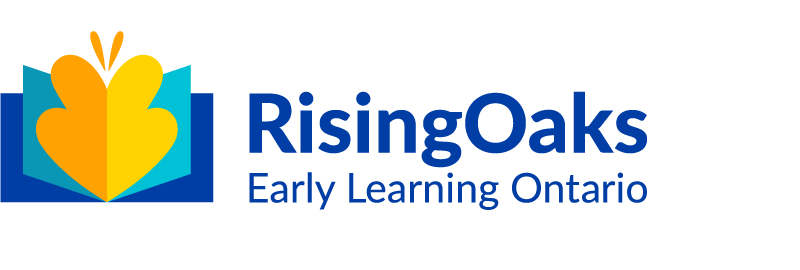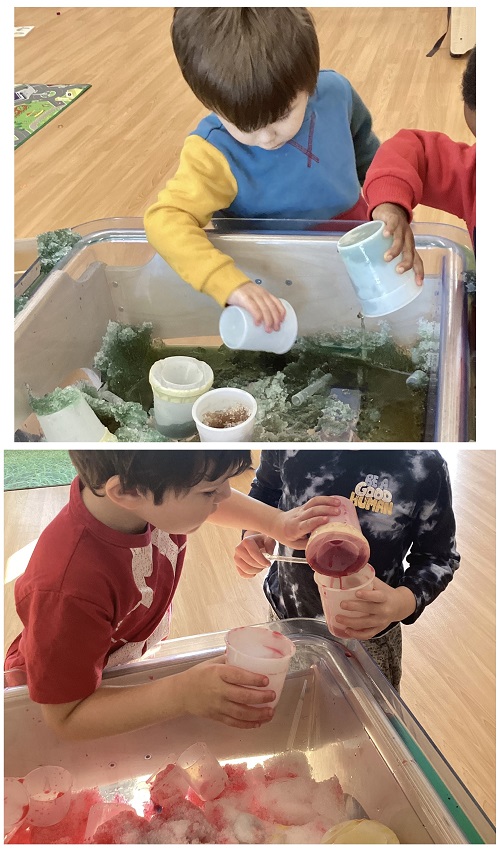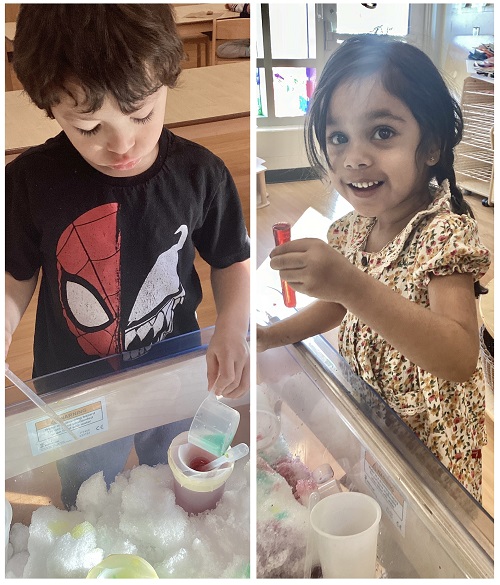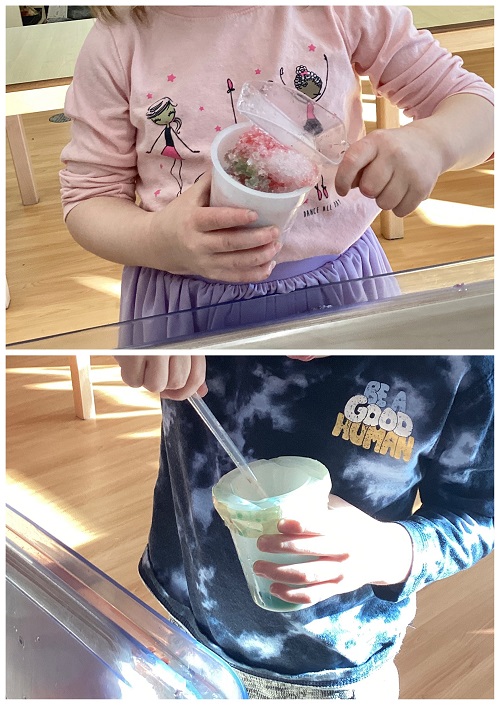The children in Preschool 2 have demonstrated a consistent interest in colour mixing during many open ended art experiences in our classroom. Many children often combine different colours of paint and glue to create and discover new colours and creations. As educators and co-learners, we decided to build upon this interest by providing the children with new opportunities to explore colour mixing.
One of the ways we did this was by filling up the sensory bin with fresh snow and ice from the playground, and adding many cups filled with different colours of water to the bin, along with tools such as syringes, tubes, cups, and scoops. We used food colouring of the three primary colours, red, yellow, and blue to create the colourful water. The children were immediately interested in diving into the bin to begin their learning and investigating. Myles was focused as he used a scoop to transfer some blue water into the cup of red water. Natalia carefully filled up a tube with red water using a syringe. Benny and James worked together to combine red and yellow water. “This is turning orange!” they said with excitement. There was an abundance of teamwork and communication among the children as they worked together to fill, transfer, mix, stir, and pour the different colours of water between the many containers and tools. The white snow allowed for the children to see and observe their vibrant new colours on a natural canvas.
They also experimented with combining the water and snow together, exploring concepts such as different states of matter. Violet used a larger scoop to smash the ice into smaller pieces. Andi filled up a cup with snow and then poured many different colours on top, creating a slushy substance in her cup. “I made ice cream!” she concluded. Many children demonstrated imagination and pretend play skills as they converted the snow, ice, and water into many innovative recipes and items. As time went on, the children also began to notice that the snow and ice was melting, producing more water in the bin. The many different colours from their experimenting also began to blend together, and the final product of the water was a deep green colour. They continued to play and learn in the water for an extended period of time, enhancing many developmental skills along the way. We look forward to expanding further on these little scientists’ enthusiasm for colour mixing and investigating!
“Optimal conditions for learning occur when we are fully engaged. For children, this happens in play that evolves from the children’s natural curiosity – active play that allows children to explore with their bodies, minds, and senses, stimulating them to ask questions, test theories, solve problems, engage in creative thinking, and make meaning of the world around them. These investigations through play fuse intellect and feeling to help children make connections and develop the capacity for higher-order thinking” (How Does Learning Happen? Ontario’s Pedagogy for the Early Years, Page 35).
